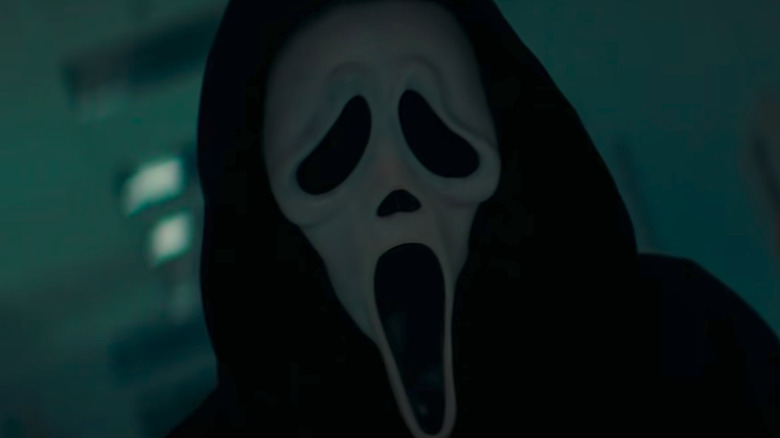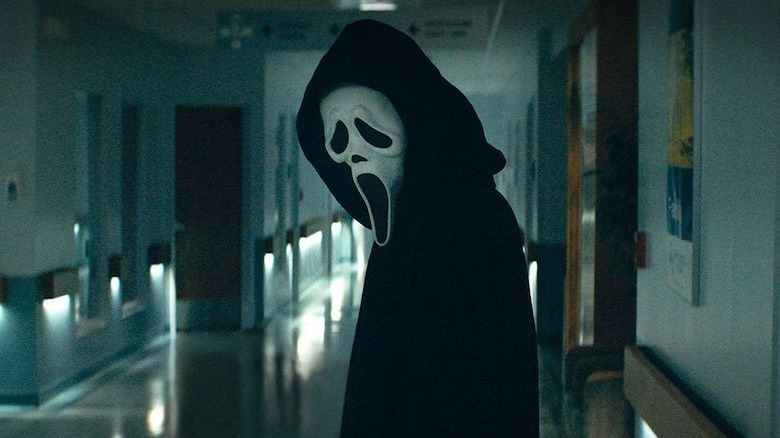We Finally Know The Origin Of The Ghostface Mask In Scream
When "Scream" first tore its way into theaters back in 1996, it instantly immortalized Ghostface in pop culture, and the villain became a modern horror icon. He stands next to the likes of Michael Myers and Jason Voorhees as a mask-wearing psychopath (or psychopaths, as the case may be) who isn't afraid to brutalize his victims. His popularity largely comes down to the simplicity of the outfit, which is made up of the white face mask and a black cloak. And of course it lends itself to the central mystery in the "Scream" series, because it's an outfit which completely hides the killer's identity.
The costume itself creates a legacy throughout the franchise, as several killers all don the Ghostface identity to hunt Sidney Prescott (Neve Campbell) for one reason or another. It all starts when Billy Loomis (Skeet Ulrich) decides to dismantle Sidney's family, because her mother has an affair with Mr. Loomis — ultimately driving Billy's mother away. He plans his killing spree with Stu Macher (Matthew Lillard) and the pair use their horror obsession to create an iconic costume which would mask their faces as well as striking sheer terror in their victims.
In real life, though, where did the Ghostface mask come from? It is very similar to the painting by famed artist Edvard Munch's "The Scream," obviously — but ultimately Wes Craven found it when he was working on pre-production for the 1996 movie.
They got the rights for the mask
Because the mask is such an important visual in "Scream" there was obviously a lot of pressure during pre-production to get the right look for Billy and Stu. And in a recent IGN featurette which celebrates the film's 25th anniversary, screenwriter Kevin Williamson revealed that the crew stumbled onto the mask when they were looking at filming locations. "No one could agree on a mask and I remember we were in a location scout, and we found Ghostface ... in a box of stuff in a garage ..." he said.
The writer went on to say that director Wes Craven spotted the mask's similarity to Munch's iconic painting, saying that he "immediately looked at it and said, 'This is like the famous Scream painting.' And so we took that to our production and we said, 'Riff on this... make something like this.'" Although that didn't solve the problem straight away, because the studio kept rejecting the numerous designs that were similar to the iconic mask. "They must've done 20 different designs. Every one of them was rejected by the studio."
But the team finally settled on a brilliant solution, "and finally we were like, why don't we just get the rights to this mask?" So the original Ghostface mask was easily marketable because it was already an established mask, and it added a real-world level of terror since it's something that teenagers can easily get hold of.
Hopefully the mask is still just as scary when the fifth "Scream" film arrives in theaters on January 14, 2022.

